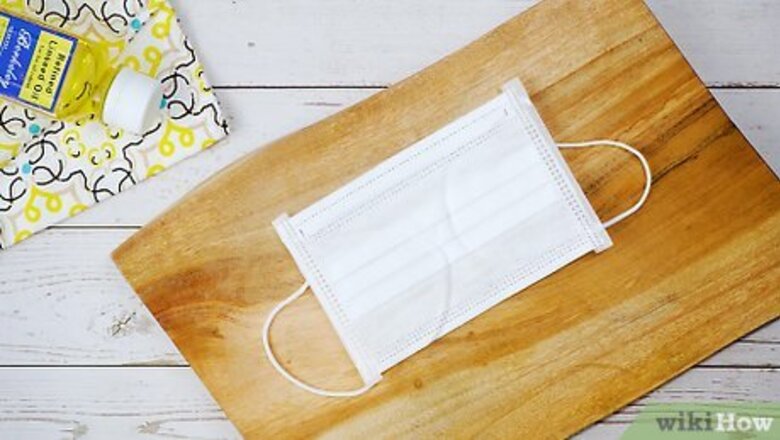
views
Cleaning and Sanding the Wood
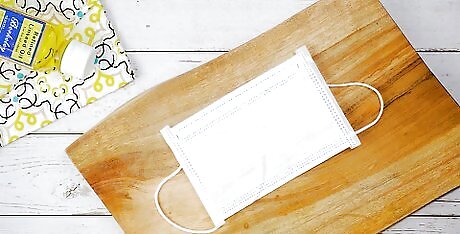
Wear a respirator or safety mask before working with sandpaper. Depending on the size of your project, you might be generating a small or large amount of dust. To protect yourself, take a moment to guard your nose and mouth with a respirator or safety mask. If you’d prefer to take extra precautions, set up a fan within your workspace as well. You can find respirators or safety masks at your local hardware or home improvement store.
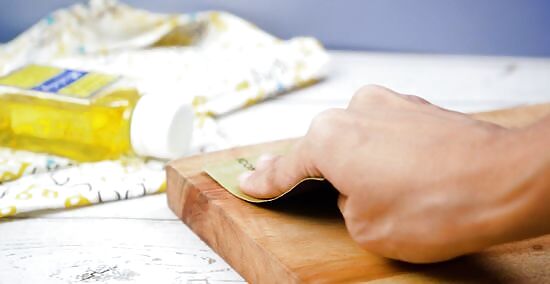
Sand down the wood with 60-grit sandpaper or disks. Take a piece of coarse sandpaper and begin rubbing down the surface of your wooden project. As you go, try working the sandpaper along the grain of the wood, so your project can look as smooth and beautiful as possible. If you’re working on a larger section of wood, like a hardwood floor, you might have an easier time using a drum sander or floor polisher with sanding disks. Always start with coarser pieces of sandpaper. These help get rid of any initial roughness, so you can start smoothing the surface with finer sandpaper later on. If you’re using a drum sander or floor polisher, remove all furniture from the area so these items don’t collect dust.Tip: You don't need to sand the wood if it's been oiled previously. This is only to remove an existing finish like wax, varnish, or paint.
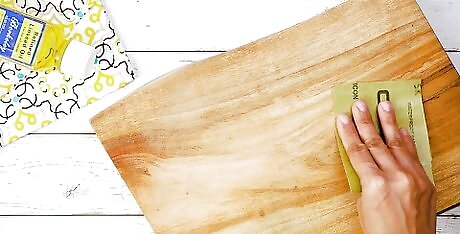
Repeat the sanding process with 80- and 100-grit paper or disks. Continue going over the wooden surface, using sandpaper sheets or disks with finer grit levels. Work in long, consistent motions along the surface of the wood, keeping the sandpaper in line with the grain. As a final buffing layer, use 100-grit sandpaper to fully smooth over the surface of the wood. Feel the surface of the wood after each sanding. If the wood feels smooth and free of imperfections after an 80-grit sanding, you might not need to worry about the 100-grit paper or disk. If you’re using a floor polisher, you might have a larger variety of sanding disks on hand.

Soak a rag with mineral spirits or ammonia. Pour some mineral spirits onto the surface of a clean cloth or rag until the material is drenched. If you don’t have any mineral spirits on hand, create a 2:8 mixture of ammonia and tap water. Whichever product you use, check that the rag is soaked, but not dripping wet. Ammonia can change the color of your wood’s finish. If the rag is dripping wet, wring it out before wiping down the wood surface.
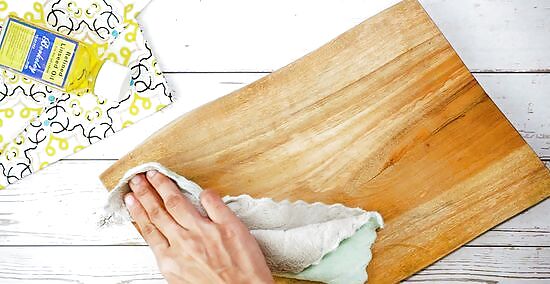
Rub down the wood surface to get rid of any grime. Use long, even strokes to wipe down your wooden floor, furniture, or other fixture. Focus especially on the areas that you’ve just sanded, or any area that you plan on finishing with boiled linseed oil. To finish up, continue wiping until you’ve cleaned off your desired surface.
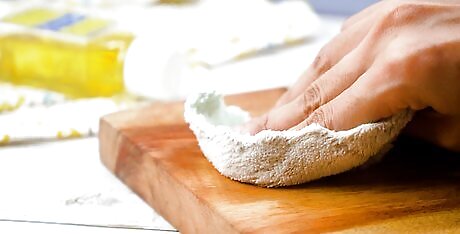
Dry off the wood with a clean cloth. Take a clean rag and rub it over the newly cleaned surface. As you work, use small, circular motions to buff and wipe away any excess mineral spirits or ammonia. Continue buffing until the entire surface is dry, clean, and smooth. If you’re drying a wooden floor, you might need more than 1 clean cloth to finish the job.
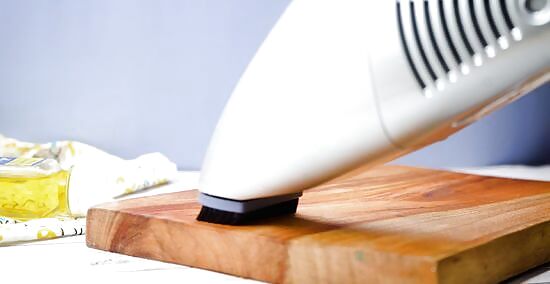
Clean up excess sawdust with a shop vac. Avoid using a traditional vacuum cleaner to suck up the leftover sawdust from your workspace, as this could end up clogging it. Instead, use the attached tube to clean up as much dust as possible, so you won’t accidentally inhale any foreign particles.
Applying the Oil Coating
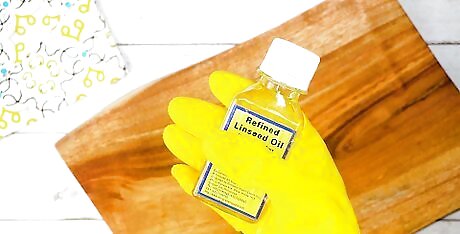
Wear a pair of gloves before handling any oil. Slide on a pair of work gloves to protect your skin. While boiled linseed oil isn’t toxic, you don’t want to get the substance on your hands and arms. If you don’t have any work gloves on hand, try a different pair of gloves to cover your hands. You can find work gloves at most hardware or home improvement stores. Boiled linseed oil dries more quickly than regular linseed oil.
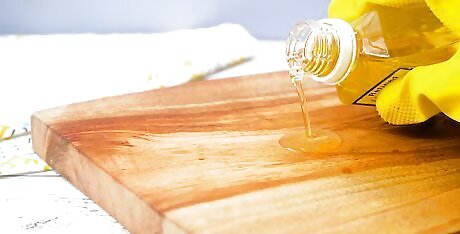
Pour oil onto a 4 by 24 in (10 by 61 cm) section of wood. Open your bottle of oil and cover at least ⅓ of a 4 by 24 in (10 by 61 cm) section of wood. If you’re working on a larger project, like a hardwood floor or piece of furniture, don’t try to coat all of the wood at once. Instead, work in small sections, so the boiled linseed oil can be applied as thoroughly as possible. Work in a linear path, so you can keep track of the wood that you’ve already oiled. It’s better to apply too much linseed oil at first than to not use enough. Use your best judgment when applying boiled linseed oil to your wood. In any project, always pour out enough oil to fully coat the surface.Did you know? Boiled linseed oil is an all-purpose finish that provides basic protection to any wood surface. While this substance can protect against basic scrapes, it’s too thin to provide any long-term protection. Because of this, boiled linseed oil might not be the best option for outdoor wooden furniture.
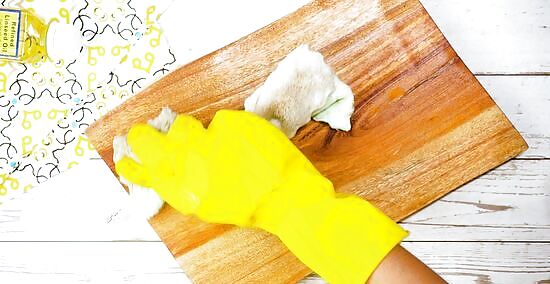
Rub the oil into the wood in circular motions with a clean cloth. Spread the oil around the surface of the wood, using small, circular motions to completely coat your project. Try to follow the grain of the wood, so the linseed oil can be worked into the wood as evenly as possible. Continue rubbing the oil until the small section of wood is fully coated. The cloth should be soft and non-abrasive, like cotton. Don’t worry if there’s any excess linseed oil on your wooden project—you can always wipe it off later!
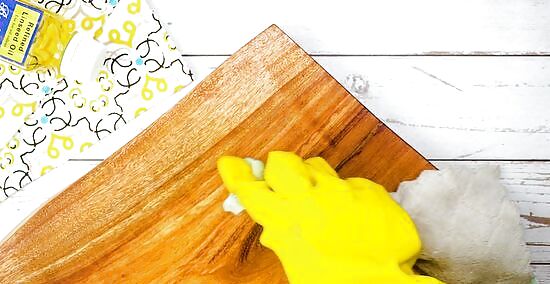
Work in small, linear sections to coat a larger project. Continue pouring boiled linseed oil over small, 4 by 24 in (10 by 61 cm) sections of your hardwood floor or furniture. Keep rubbing the oil in circular motions, following the grain of the wood as you go. Cover the entire surface with oil before wiping anything off.
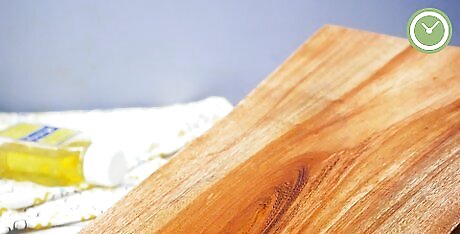
Wait 15 minutes for the oil to soak into the wood. Set a timer for 15-20 minutes, then step away from your project. In this amount of time, the linseed oil can properly adhere to and soak into whatever project you’re working on. If you don’t let the linseed oil soak into the wood, then your finish won’t be as protective or effective.
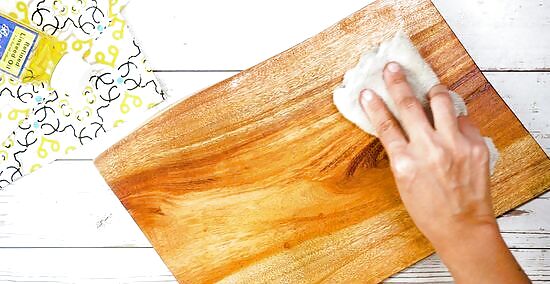
Wipe away any extra oil with a rag. Take another clean cloth and rub down the wooden surface. Use long, even strokes to soak away any extra oil lingering on the surface of your flooring, furniture, or other wooden fixture. As you work, check that you’ve wiped down all areas of the project; if any excess oil is leftover, it will leave a sticky finish.
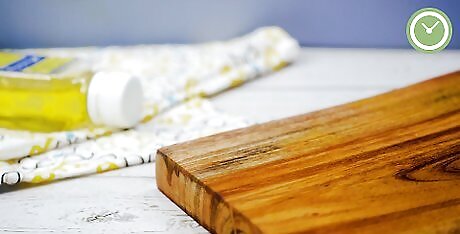
Wait 1-2 days for the wood to dry completely. Leave your wooden surface alone for at least 24 hours, so the boiled linseed oil can completely dry and set into the wood. If you’re working on a large section of flooring, try to limit foot traffic in the area. In the meantime, don’t apply any extra oil to the surface. Check the wood after 24 hours to see if it feels dry. If the wood still feels a little damp, give the project more time to dry off.
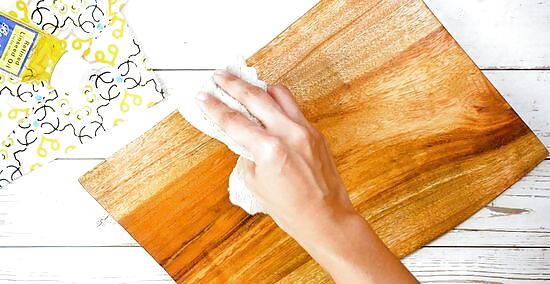
Brush off any dust from the wood’s surface. Take a clean cloth and wipe down your project. This doesn’t need to be intensive—instead, try to remove any obvious specks of dust or dirt that have littered the surface during the drying period. You don’t want any dust specks getting caught in your additional layers of linseed oil.
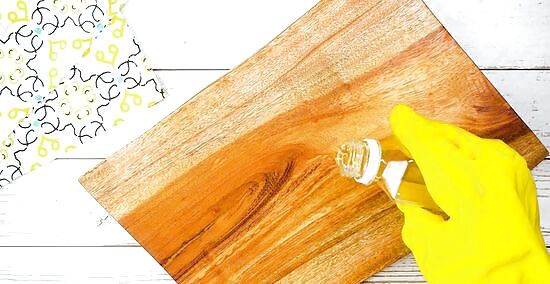
Apply a second coat of oil and let it soak for 15 minutes. Follow the same procedure that you did before, using a smaller amount of oil in the process. Use a rag to rub the substance into the wood, working the cloth in circular motions that follow the grain. After rubbing in the oil, wait about 15-20 minutes for the substance to soak and set into the wooden surface. Try setting a timer to remind yourself how much time has passed.
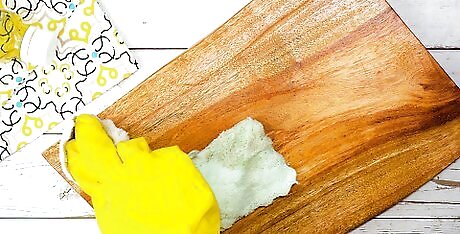
Use a clean cloth to wipe off any extra oil after 15 minutes. Take a clean rag or cloth and get rid of any excess oil lingering along the surface. As you work, try moving your rag in long, consistent strokes while following the wood’s grain. Continue wiping until any latent oil is completely gone.

Reapply some boiled linseed oil when the wood is no longer glossy. Check on your wood surface once every 2-3 weeks. If your hardwood floor or piece of wooden furniture is used on a regular basis, you might see a rapid decline in glossiness and finish on the surface. Whenever this happens, apply 1-2 layers of boiled linseed oil to your wood, giving the item enough time to dry off in between coats. Always wipe off any excess linseed oil before applying an additional coat.
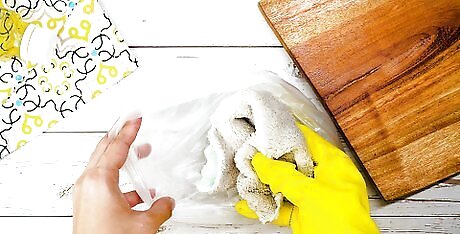
Dump any oily rags into a metal can or plastic bag. As you finish using each oil-soaked cloth, toss the used rag into a separate metal can, plastic container, or bag. Once you’ve set aside all your rags, fill up the rest of the can with cool water. Finally, seal off the container with a lid. Before throwing this can into the trash, call your garbage company and see what their policy is on disposing potentially hazardous material. When left unattended, rags soaked with boiled linseed oil can randomly catch on fire. If you keep any used material in a small, water-filled container, you shouldn’t run into any issues.



















Comments
0 comment